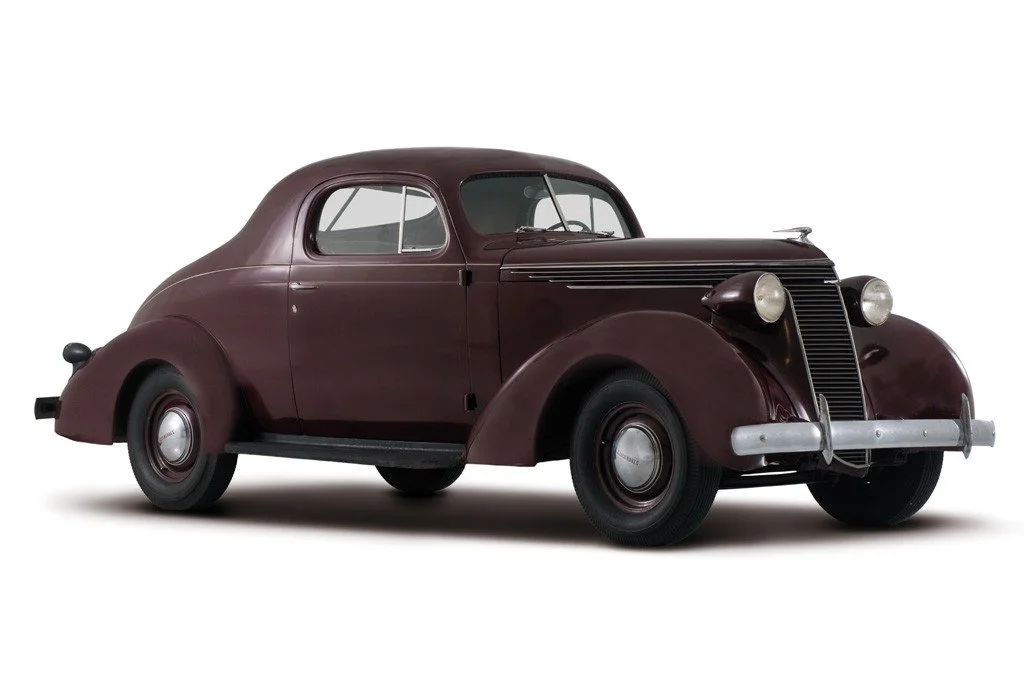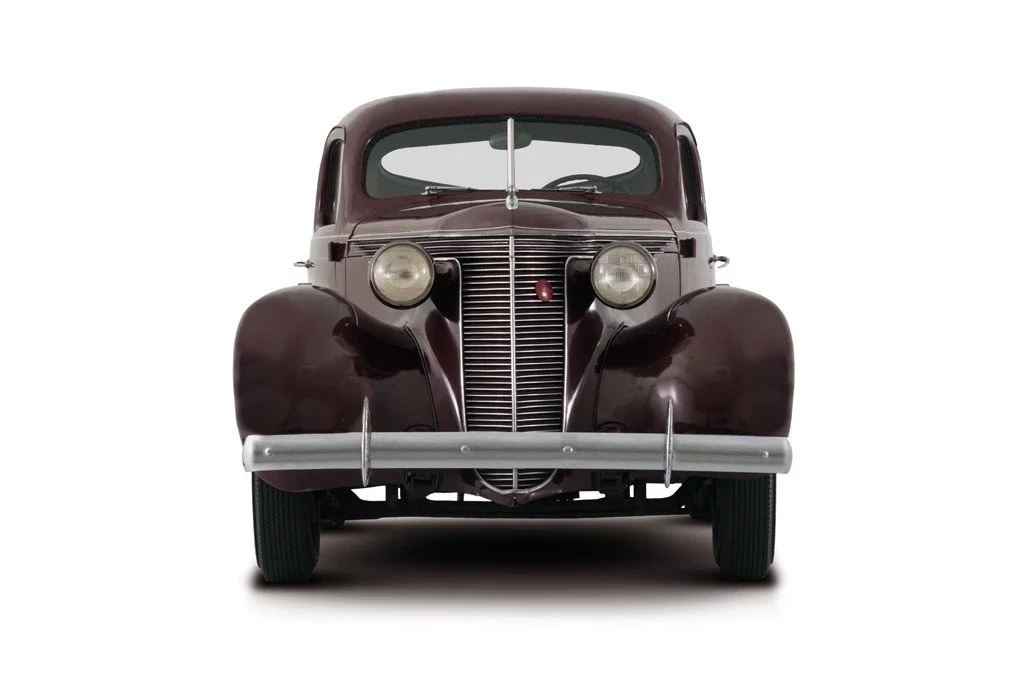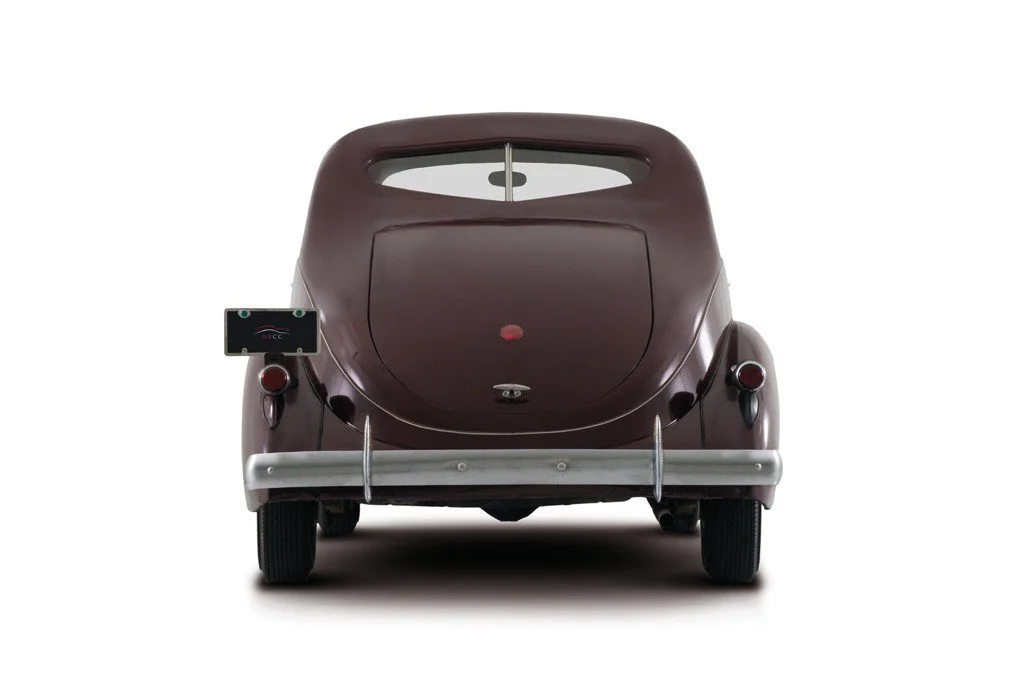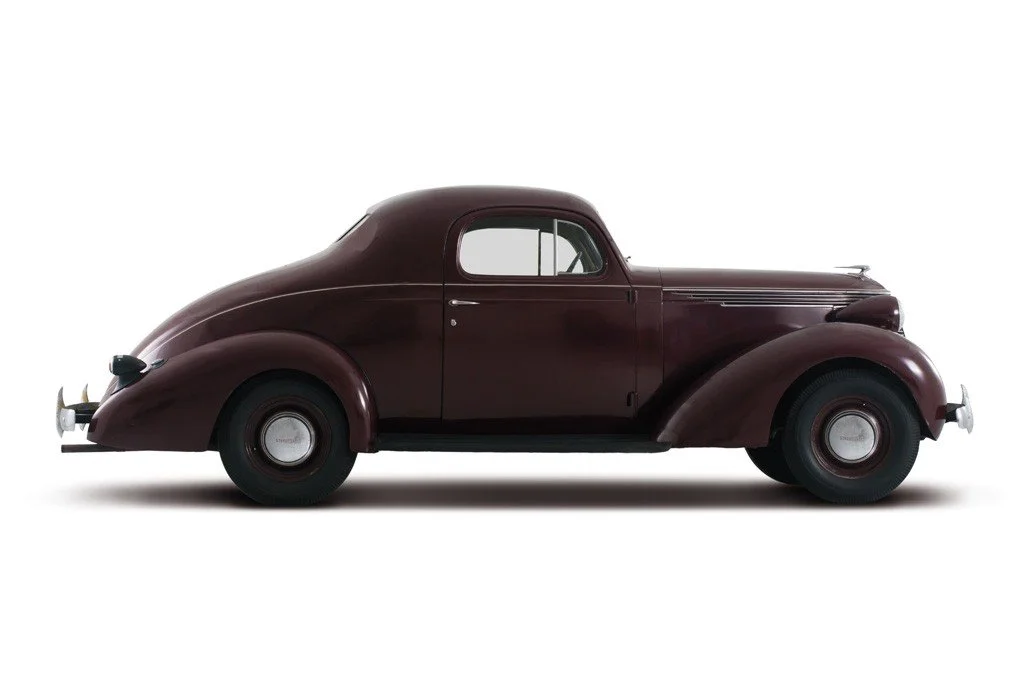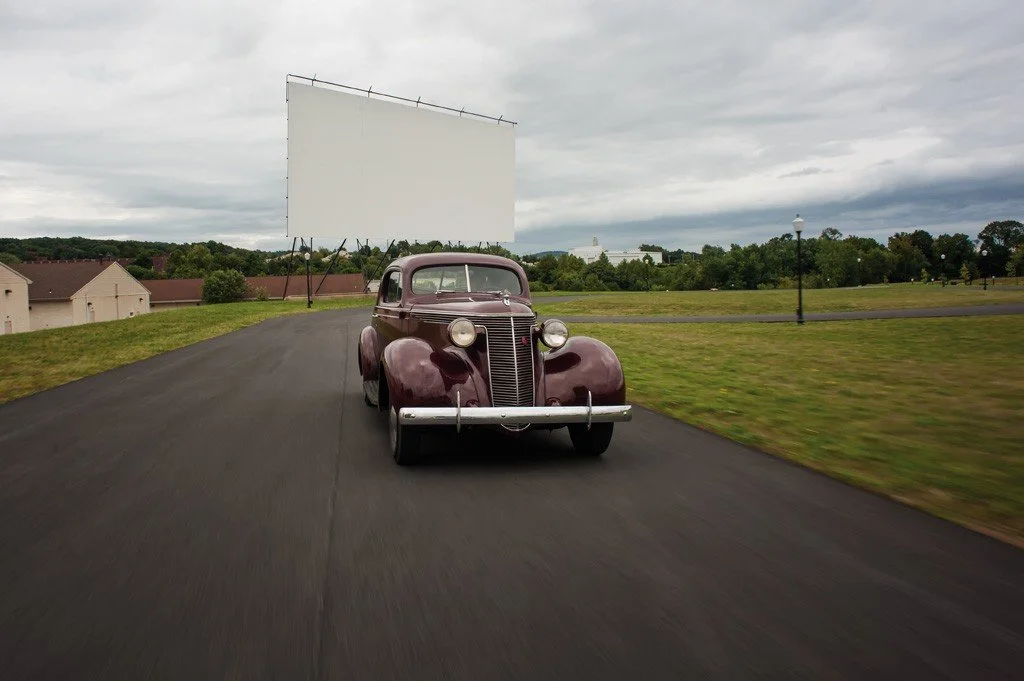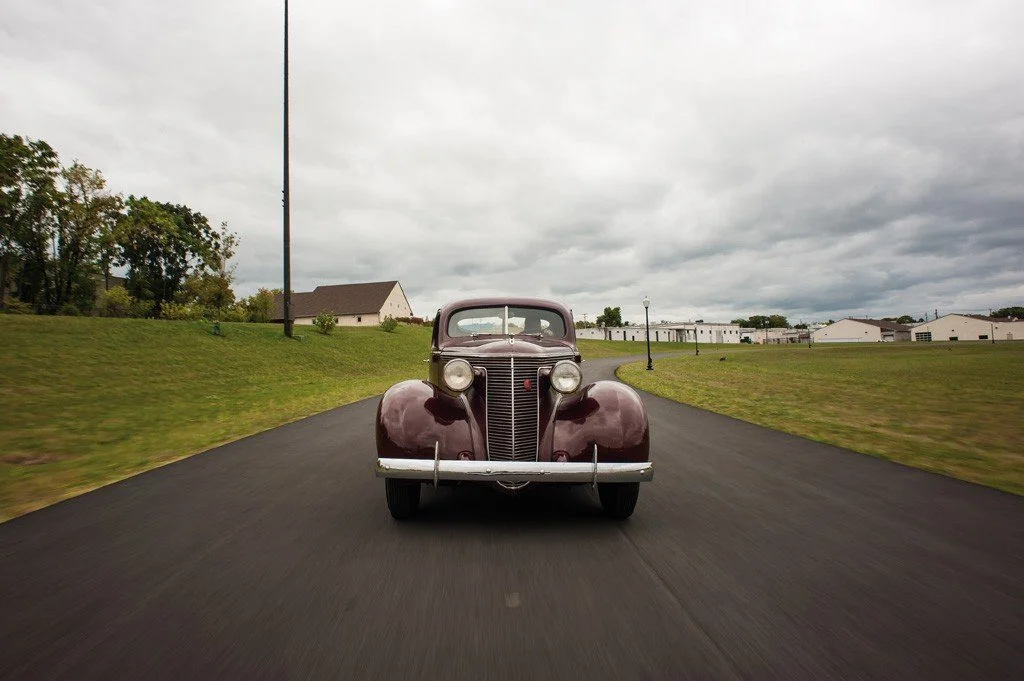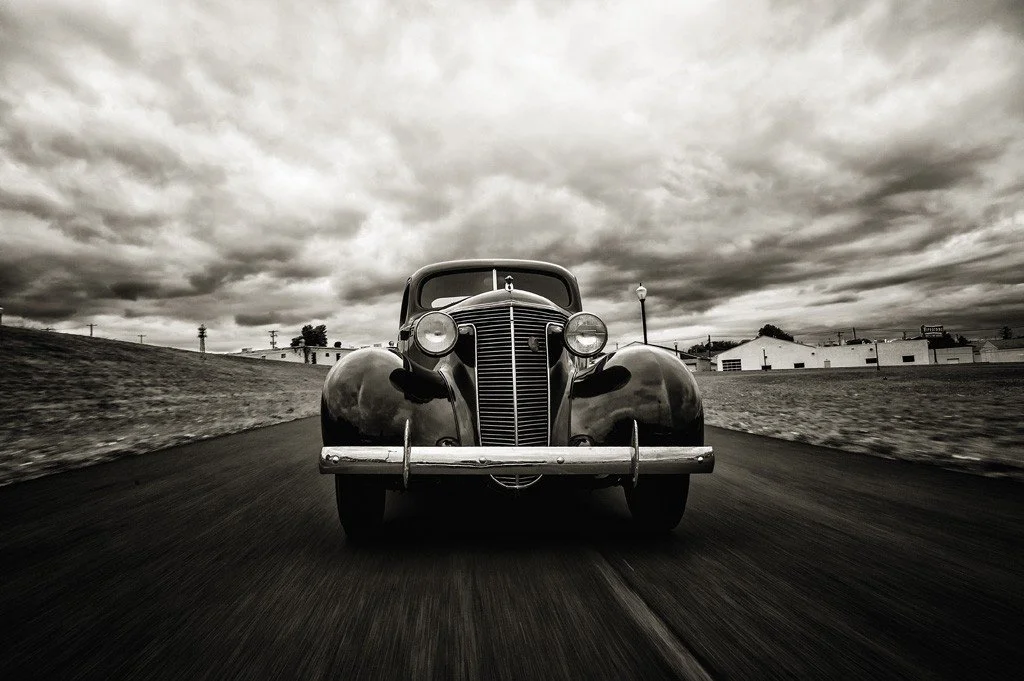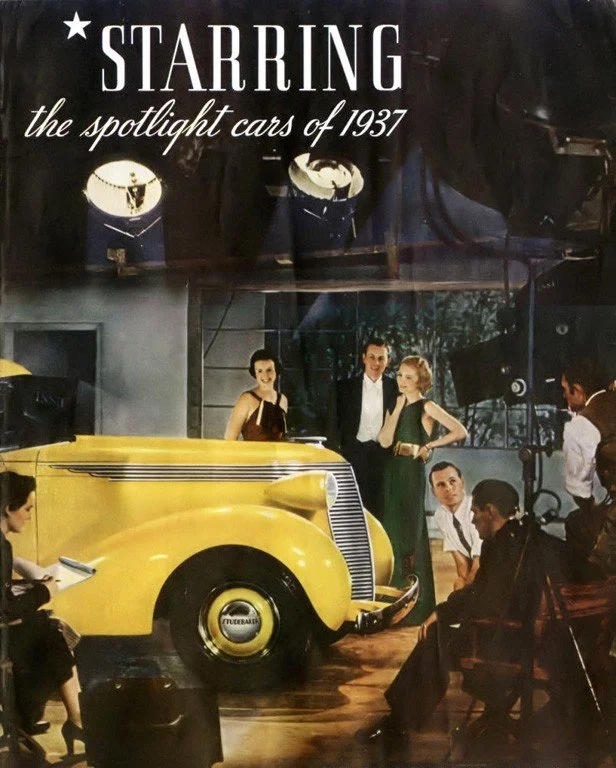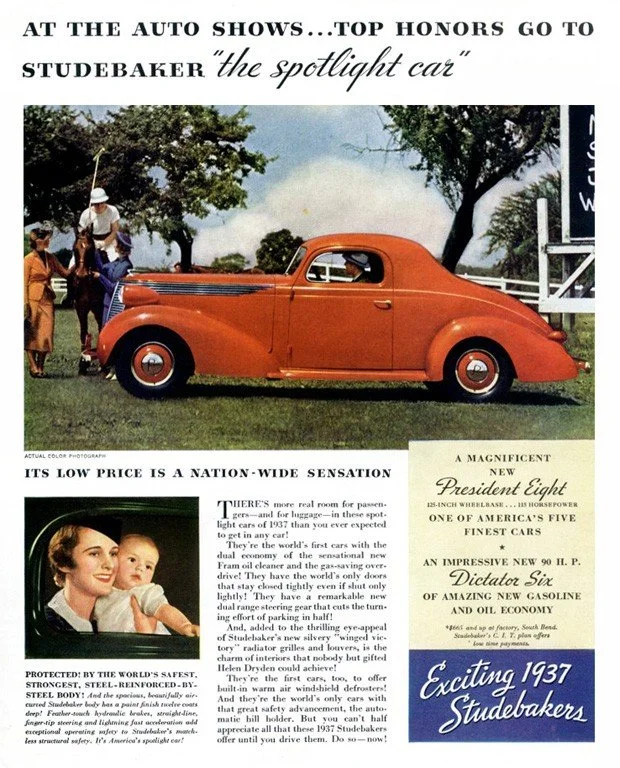-
Studebakers from the thirties are not common today, especially in the rare three-window coupe body style. This maroon '37 Dictator Coupe had been sold new to a man from Pittsburgh, PA and then sold again to its second owner in Cuerwinsville, PA. After some time, it was sold again its third owner in Annapolis, MD. On its way on a trailer to Annapolis, the car was spotted by a gentleman from Virginia, and after a brief phone call with the owner, the Dictator went to Virginia. Nicola Bulgari Car Collection purchased the car from this last owner.
The car is completely original, save for a repaint on the rust-free body. The interior and the mechanics are completely original and have never been restored. Some notable features on the Dictator are the full instrumentation, with clock and temperature gauge, safety glass, rotary door latches with safety catches, independent front suspension, dual windshield wipers and dual defroster. In the future, a complete mechanical refurbishment is planned. -
Company
Studebaker Motor Co.Wheelbase
116inInterior trim
Gray clothBrakes
front and rear drumsMake
StudebakerLength
193.5inEngine
inline 6 - 217.8cidTires
6.00x16Model
Dictator SixWidth
74inCarburetor
1 Stromberg EX 23Original Price
$765Body style
2-door Business CoupeWeight
2695lbsHorsepower
90hp @ 3400rpmProduction
89,000Model year
1937Exterior paint
Grapetone MaroonTransmission
Synchro-shift 3-speed manual -
The Studebaker Brothers Manufacturing Company was founded in 1852 in South Bend, Indiana. They made a fortune building wheelbarrows for the California Gold Rush, followed by supplying wagons to the Union Army in the Civil War and the English army in the Boer war. After a fire in 1875 destroyed their factory, they built a new brick plant covering 20 acres, which became “The largest vehicle house in the world.” Some of their carriages could cost up to $20,000.
Studebaker reluctantly entered the automotive business in 1902 with an electric vehicle designed by Thomas Alva Edison and in 1904 with gasoline vehicles, all sold under the name 'Studebaker Automobile Company.' Over the next 3 decades, the company established an enviable reputation for quality and reliability, but the early thirties saw Studebaker in troubled times. The Pierce Arrow Motor Company that had been purchased some years before was draining all the money. The Rockne brand, created in 1932 in an attempt to enter the low price segment, was a huge loss, while the purchase of White Truck Company put a huge dent in Studebaker capital. In 1933 the Company was placed into receivership. Scraping together the last funds available, a large advertising campaign was launched, explaining how things were going and asking for loyalty from old customers. “Studebaker carries on” was the title of this campaign, and literally saved the company. Pierce Arrow was sold for one million dollars, the Rockne division was closed, and the White stock was sold off. With fresh money, and complete redesign of all models, the business took off. The model lines were just two, the economical Dictator six and the more upscale President eight.
For 1936 the engine was a powerful 218 cubic inches six cylinder that could generate 90 horsepower. The styling was very pleasant, with many art deco touches both in the interior and exterior. Sales were very good, with almost 100,000 cars sold, almost double in comparison with the previous year. 1937 saw a heavy facelift on the front end, with a one-piece hood that opened from the firewall . The body was virtually unchanged, save for some added features and options, like the 18 gallon fuel tank, dual defroster on the windshield, rotary door latches with safety catches, hill holder and independent front suspension. Sales were very good for the first nine months of the model year, but fell dramatically in the last part of 1937, due to a sudden strong economic recession. For 1938 sales fell to only 53,000 units, with a loss of 1.7 millions of dollars. The name Dictator had been introduced in 1927, meaning that the car would “dictate the standard for their class” on how a car should be built. The name, however, would take on a new meaning when the political situation in Europe deteriorated in the late 1930s, Studebaker decided to drop the Dictator name. The 1938 Dictator equivalents would be called 'Commander' models. In 1939, Studebaker introduced the Champion as the new budget model, and it would save the company from another bankruptcy.

